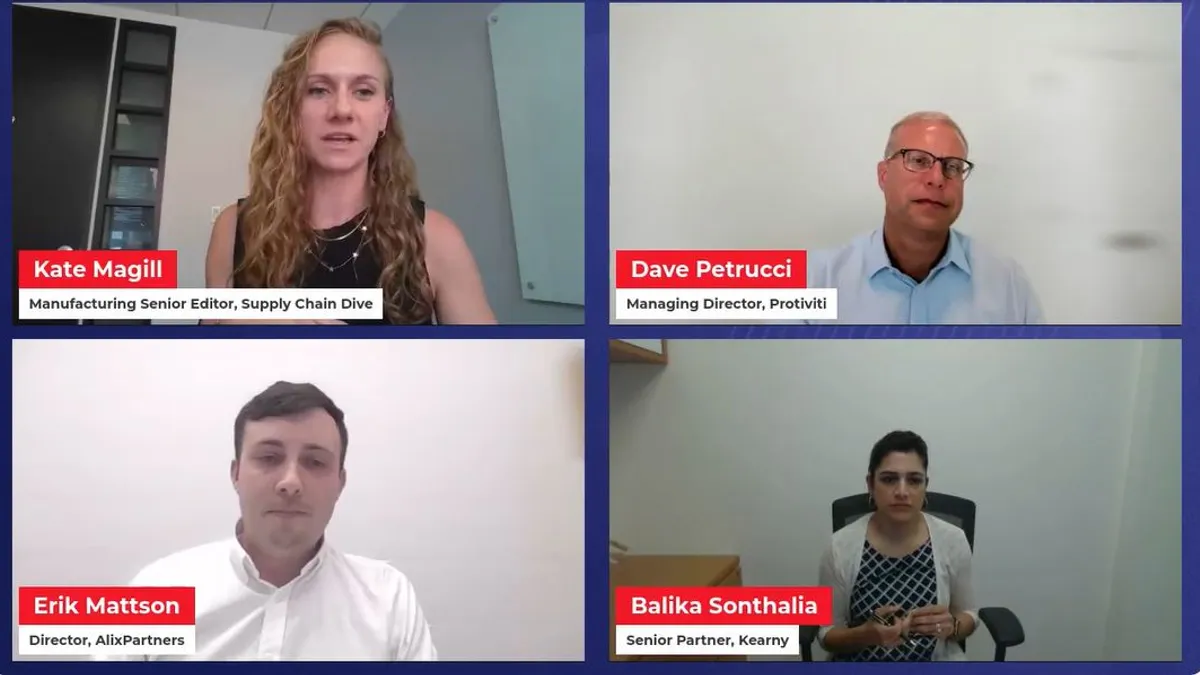Editor's note: This story is part of a series highlighting takeaways from a July 11 event hosted by Supply Chain Dive, Transport Dive and Manufacturing Dive. Register here to watch the replay on demand.
Visibility into sustainable sourcing remains to be one of the biggest supply chain risks currently facing companies, Balika Sonthalia, senior partner at Kearney, said during Supply Chain Dive’s virtual event Tuesday “Supply Chain Outlook: Trends and Risks To Watch in 2023.”
With regulations pushing companies toward suppliers who are “truly sustainable,” businesses will need visibility into ESG targets to procure products from countries known for more responsible sourcing, Sonthalia said during the panel.
Companies also tend to use suppliers more as a “means to an end in terms of acquiring the products and less about innovating with them and problem solving issues such as sustainable sourcing,” she explained. This includes working with suppliers to find the sustainable materials.
“So, I think the way in which suppliers are tapped into, and the way that they partner today, still continues to be a bit more myopic and less strategic, and there’s options to do more of that.”
Protiviti Managing Director of Global Supply Chain & Operations Practice Dave Petrucci highlighted that the U.S. continues to play the “short game,” whereas global competitors like China and other eastern countries have much longer term strategies at play.
“It’s forced us into sole sourcing models, it’s forced us into lack of raw material control,” Petrucci said during the panel. “Even worse, it’s forced us into losing our bill of materials control either through contract manufacturing, through tier one, black box designs, etc.”
While issues like product shortages and sustainable sourcing continue to plague procurement teams, Petrucci highlighted the need to get back to “playing the long game and putting the right strategies in place that allow us to not only look at cost from a supply chain standpoint, but … how [to] drive revenue assurance through those models.”














